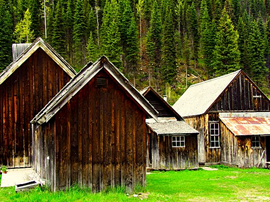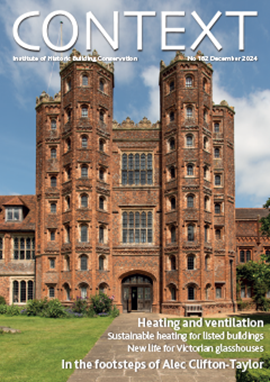Conservation officer
Local planning authorities generally employ, or retain the services of, a conservation officer. Sometimes this role may be combined with that of archaeological officer, although they are very different, albeit related, functions. The role can also be referred to as Historic buildings inspector.
The conservation officer’s role is to ensure the heritage assets of the local authority are preserved, managed, enhanced and promoted.
The involvement of local authority conservation officers in development proposals might include:
- Offering pre-application advice on the location, form and character of developments that may affect listed buildings, conservation areas, scheduled monuments or other heritage assets.
- Assessing planning applications for new developments that may affect heritage assets and proposing planning conditions that might be imposed on permissions.
- Agreeing inspection cycles.
- Visiting sites and carrying out inspections and surveys.
- Assisting enforcement action.
Managed intelligently the conservation of heritage assets need not disrupt developments. However, this often requires engagement with the local planning authority’s conservation officer as soon as possible if it is suspected that proposals may affect heritage assets. This will help identify the procedures that must be followed and avoid abortive work.
Other activities undertaken by a local authority conservation officer might include:
- Maintaining information about heritage assets.
- Surveying assets that are at risk.
- Estimating restoration and conservation costs.
- Advising owners of buildings at risk or redundant buildings.
- Advising on policy measures and controls both locally and nationally.
- Advising on regeneration projects affecting heritage assets.
- Sourcing grants and other funding for conservation work.
- Championing heritage issues in the local authority and the wider community.
- Liaison with Historic England.
- Implementing schemes to conserve heritage assets.
- Advising on the designation of heritage assets.
- Canvassing public opinion and dealing with public enquiries.
- Planning and supervising long-term environmental projects.
- Assisting with enforcement action to protect threatened buildings or conservation areas.
The activities of conservation officers are most effective when they are embedded in the local planning authority, rather than being seen as an add-on.
NB. Conservation officers may also be employed by non-departmental public bodies or charitable trusts such as English Nature, the Countryside Agency, English Heritage, Historic England, the National Trust and so on, as well as by central government and by private consultancies.
[edit] Related articles on Designing Buildings Wiki
- Archaeological officer.
- Are works to listed buildings demolition or alteration?
- Archaeology and construction.
- Building preservation notice.
- Cautions or formal warnings in relation to potential listed building offences in England and Wales.
- Certificate of immunity.
- Charging for Listed Building Consent pre-application advice.
- CIAT shares IHBC research into LA conservation service capacity.
- Conservation.
- Conservation areas.
- Conservation officers in historic towns.
- Conservation practice survey 2016.
- English Heritage.
- Forced entry to listed buildings.
- Historic England.
- Historic Environment Service Provider Recognition.
- How to make conservation areas work.
- Is conservation area policy fit for purpose 50 years on.
- Listed buildings.
- Local authority conservation specialists jobs market 2014.
- Loss of senior conservation staff and posts in England March 2010 to April 2011.
- National Planning Policy Framework.
- Negotiating listed building consent.
- Negotiating skills for conservation professionals.
- Planning authority duty to provide specialist conservation advice.
- Scheduled monuments.
- Sharing local authority conservation services.
- Society for the Protection of Ancient Buildings.
- The history of conservation areas.
- Tree preservation order.
- Use of direct action in heritage enforcement cases in England.
- What makes a heritage-at-risk officer.
[edit] External references.
IHBC NewsBlog
SAVE celebrates 50 years of campaigning 1975-2025
SAVE Britain’s Heritage has announced events across the country to celebrate bringing new life to remarkable buildings.
IHBC Annual School 2025 - Shrewsbury 12-14 June
Themed Heritage in Context – Value: Plan: Change, join in-person or online.
200th Anniversary Celebration of the Modern Railway Planned
The Stockton & Darlington Railway opened on September 27, 1825.
Competence Framework Launched for Sustainability in the Built Environment
The Construction Industry Council (CIC) and the Edge have jointly published the framework.
Historic England Launches Wellbeing Strategy for Heritage
Whether through visiting, volunteering, learning or creative practice, engaging with heritage can strengthen confidence, resilience, hope and social connections.
National Trust for Canada’s Review of 2024
Great Saves & Worst Losses Highlighted
IHBC's SelfStarter Website Undergoes Refresh
New updates and resources for emerging conservation professionals.
‘Behind the Scenes’ podcast on St. Pauls Cathedral Published
Experience the inside track on one of the world’s best known places of worship and visitor attractions.
National Audit Office (NAO) says Government building maintenance backlog is at least £49 billion
The public spending watchdog will need to consider the best way to manage its assets to bring property condition to a satisfactory level.
IHBC Publishes C182 focused on Heating and Ventilation
The latest issue of Context explores sustainable heating for listed buildings and more.















